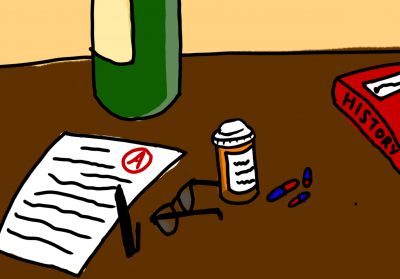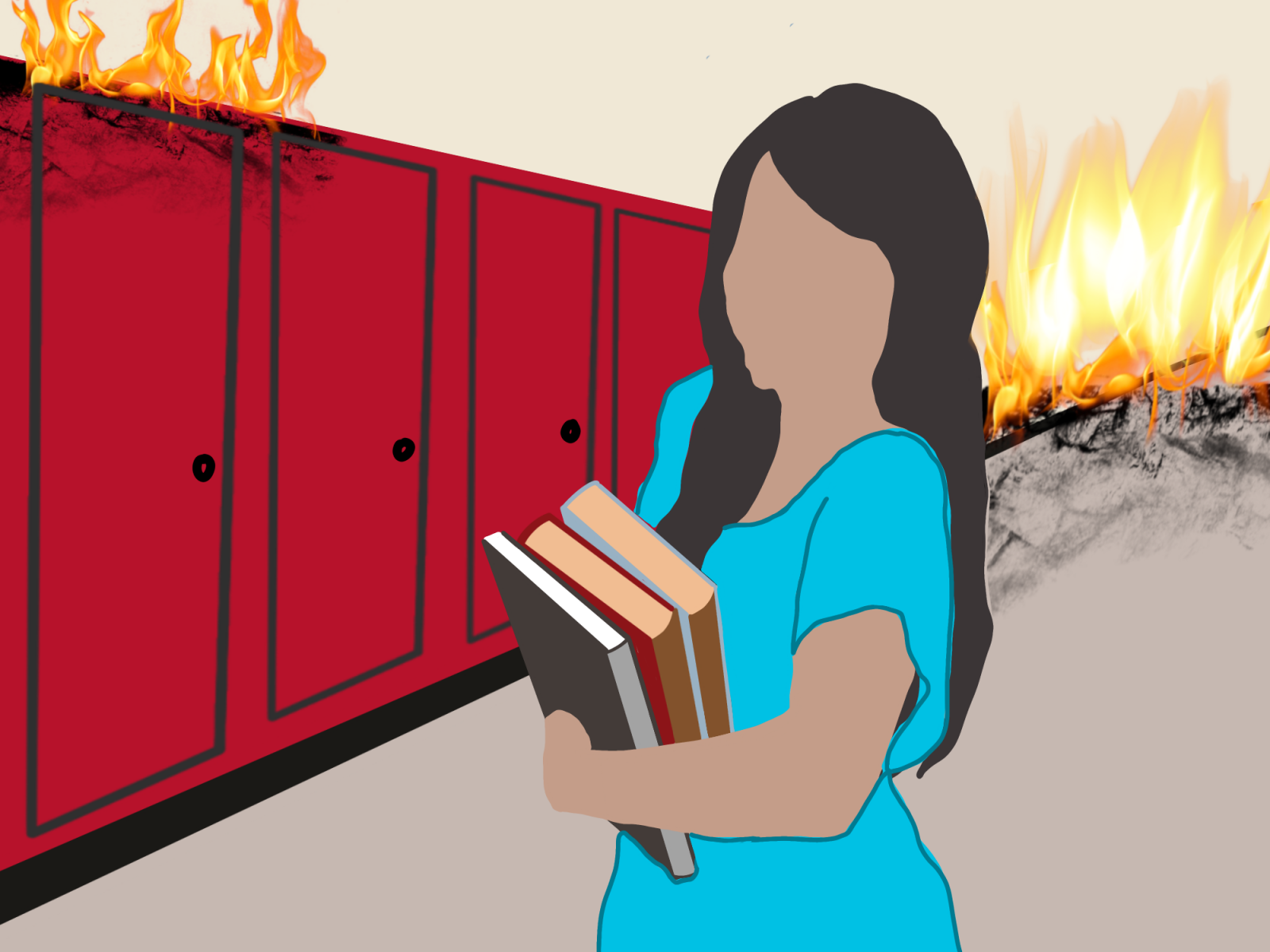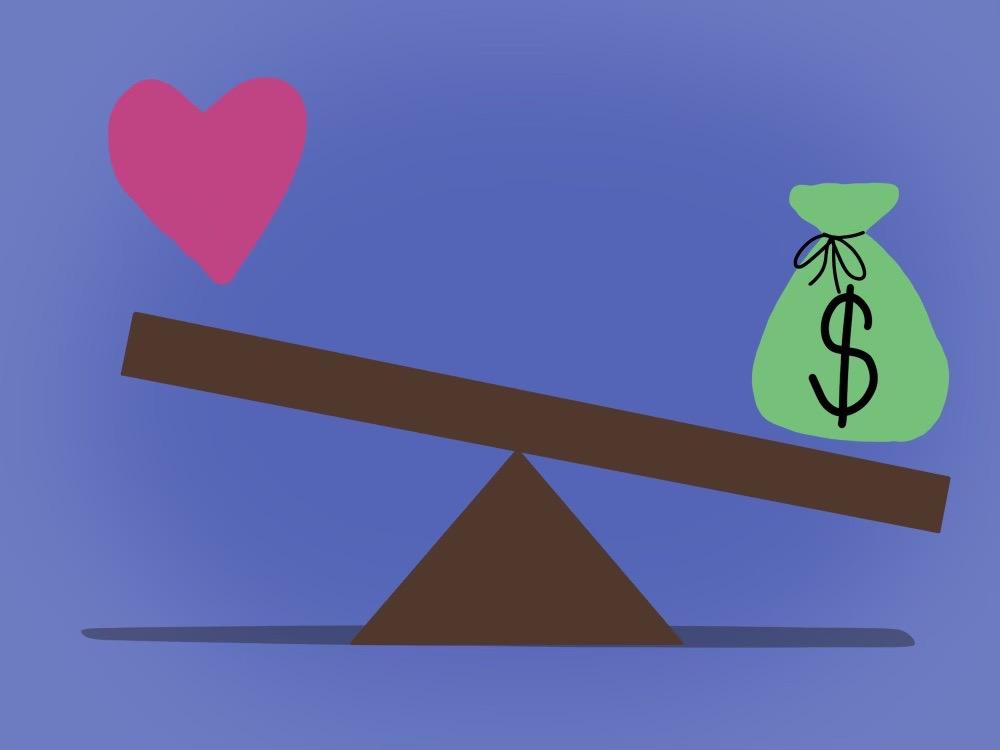Some of the works of Geoffrey Chadsey — a contemporary American artist — portray male scenes of college life with young frat boys lying around their dorms. Painted with unhealthily cool shades and often surrounded by bottles or cans, these images evoke a requiem for parties and foolhardiness.
The artworks summarize what college is chiefly thought to be: parties, alcohol and drugs.

For most young adults, college is a pivotal rite of passage that suddenly offers them total freedom as well as the temptation to indulge in the variety of illegal activities that surround them. As many students crumble under the pressure — whether external or self-inflicted — to start drinking, some of them wish to reach even further and enter the spiral of drug addiction.
Before moving on, I need to clarify that when I refer to drugs, I will only focus on hard drugs, excluding alcohol — since it is legal for people of age — and marijuana, which is being legalized in progressively more states.
Drugs have become an inherent part of the series of unspoken rules that make up college culture, to the extent that students are almost expected to experiment with them while attending university.
The reason that causes someone’s pursuit of drugs in the first place greatly influences one’s drug of choice.
Students who are involved in Greek life or frequently attend parties are at a greater risk of substance abuse of drugs. Similar illicit substances appear particularly appealing to vulnerable youth who suffer from anxiety in social settings or are simply curious enough to accept an unknown pill or powder. Furthermore, members of fraternities and sororities can also be victims of hazing behaviors that force alcohol consumption upon them.
Others resort to drug abuse to either release college-related stress or to improve their academic performance. Valium and Xanax are common tranquilizers that can seem to offer a temporary solution to tension buildup from school, personal and familial expectations or struggles with socializing. On the other hand, one in six students have tried “study drugs” — Adderall, Ritalin or Concerta — namely stimulants that are misused in cases of heavy workloads as they are thought to improve focus and alertness.
Finally, students who have already suffered from any type of addiction or have a family history of substance use disorder are at an incredibly heightened risk of developing an addiction.
This alarming data demonstrates that drugs are ubiquitous on campus, from Greek life houses to dorms or study rooms, and can be alluring to most groups of students because they might represent the immediate answer to many of their problems and concerns. What can be initially justified as ‘part of the college experience’ can quickly become an addiction and affect students’ lives in the long term.
College students are among the largest groups of drug abusers in the country, and many of them are turning away from marijuana toward other substances. The use of amphetamines — Ritalin and Adderall — has doubled in the last ten years.
Other than endangering an individual’s health or even their own life, these substances can have other consequences. For instance, the nonmedical consumption of stimulants results in a lower GPA and the likelihood of addiction to a broad range of other drugs.
The normalization of drugs among students is also a reflection of the trivialization of the issue, even by experts. Dr. Brian Doyle was quoted in a journal article reviewing stimulant use by college students saying the increasing consumption of study drugs is not concerning because it mainly occurs during exams and ceases once finals week is over.
Among the overall inadequacy of how colleges tackle the issue of illegal drugs on their campuses, there is a difference in response between public and private institutions. Public universities tend to go further than disciplinary action and have higher rates of arrests in case of drug offenders. Conversely, private schools prefer to look after the criminal record of their students and hope that educational measures will be enough to discourage drug abuse.
Neither of these approaches seems to be particularly effective as statistics demonstrate an incessant increase in the numbers of individuals facing addiction on campuses. Colleges should continue to insist on prevention by spreading awareness about the consequences of addiction, dispelling popular myths about party and study drugs, as well as resorting to disciplinary action when necessary. A zero-tolerance policy approach to drug use, on the other hand, can be more harmful than helpful as it often magnifies the problem by leaving students without a support system.
Schools must also invest in free treatment programs for students who are in recovery and provide them opportunities to learn from their mistakes and make better choices. On-campus recovery programs, like BU’s Collegiate Recovery Program, are especially beneficial because they allow students to pursue their studies and work toward their future while overcoming addiction.
Finally, institutions should offer mental health resources to openly discuss the reasons behind drug use and advance alternative coping mechanisms.

























































































































